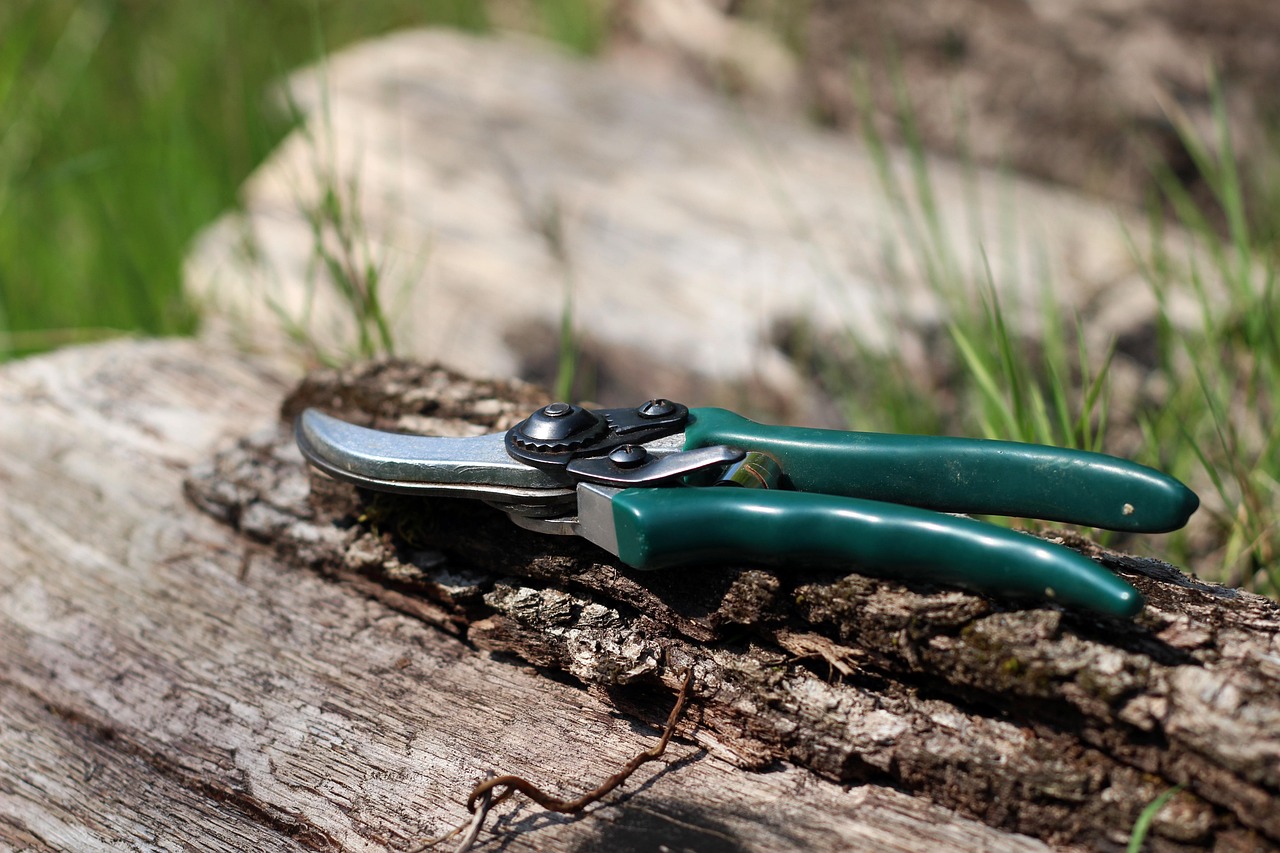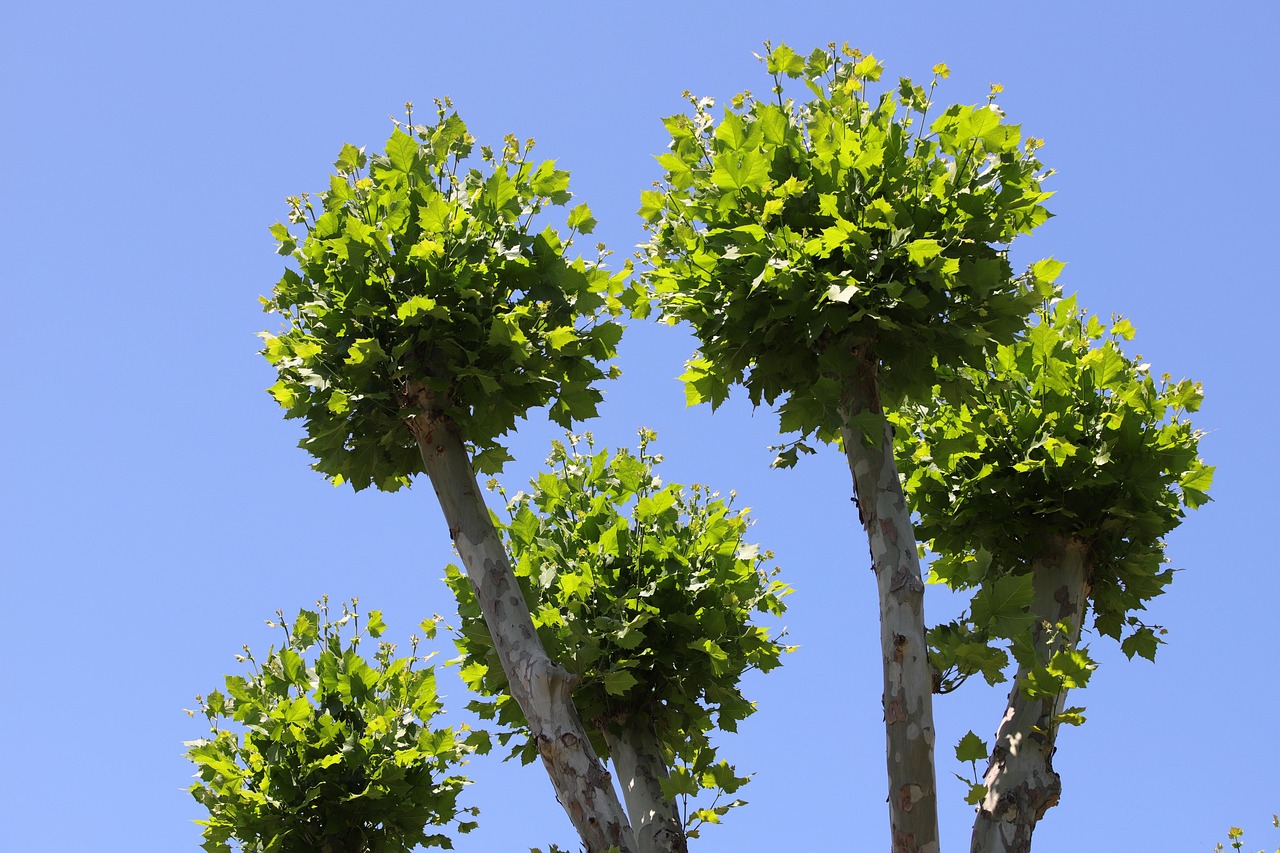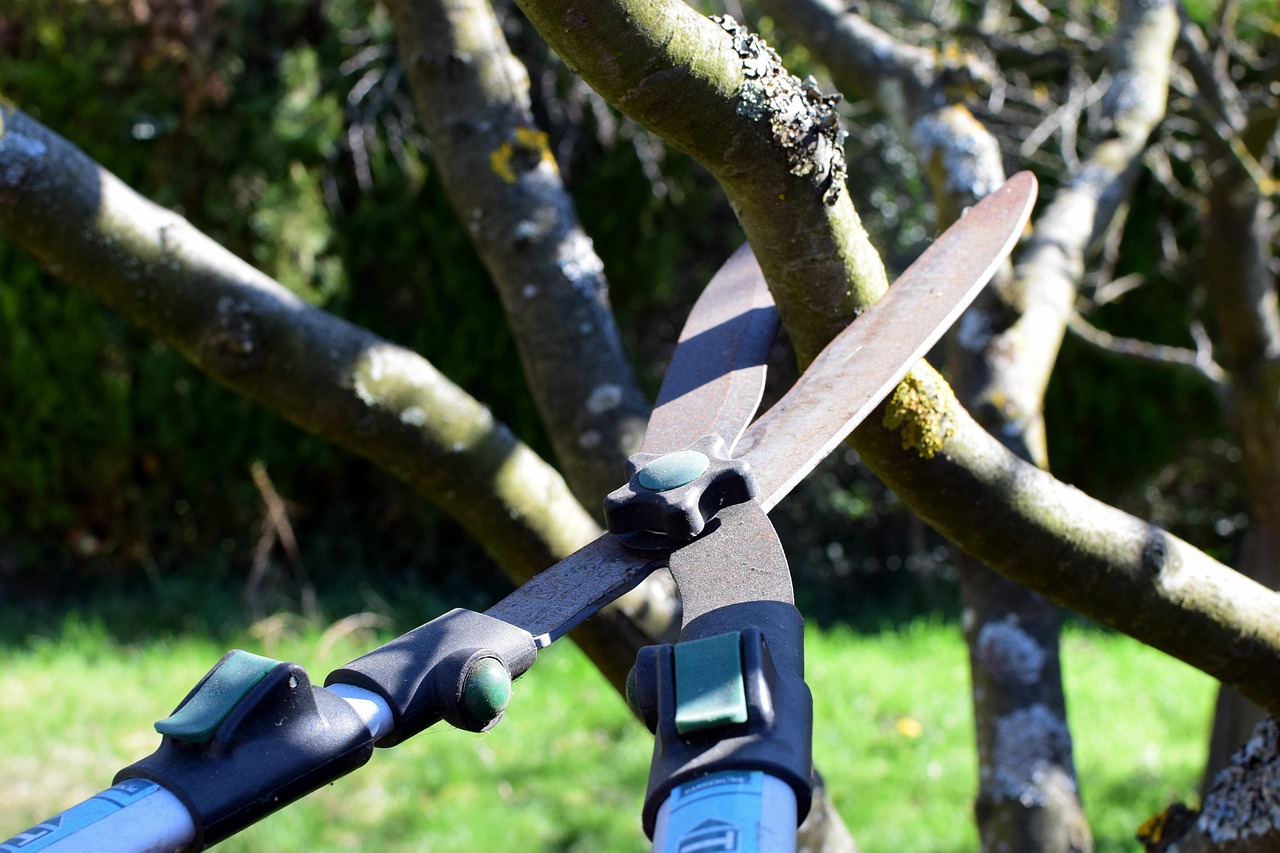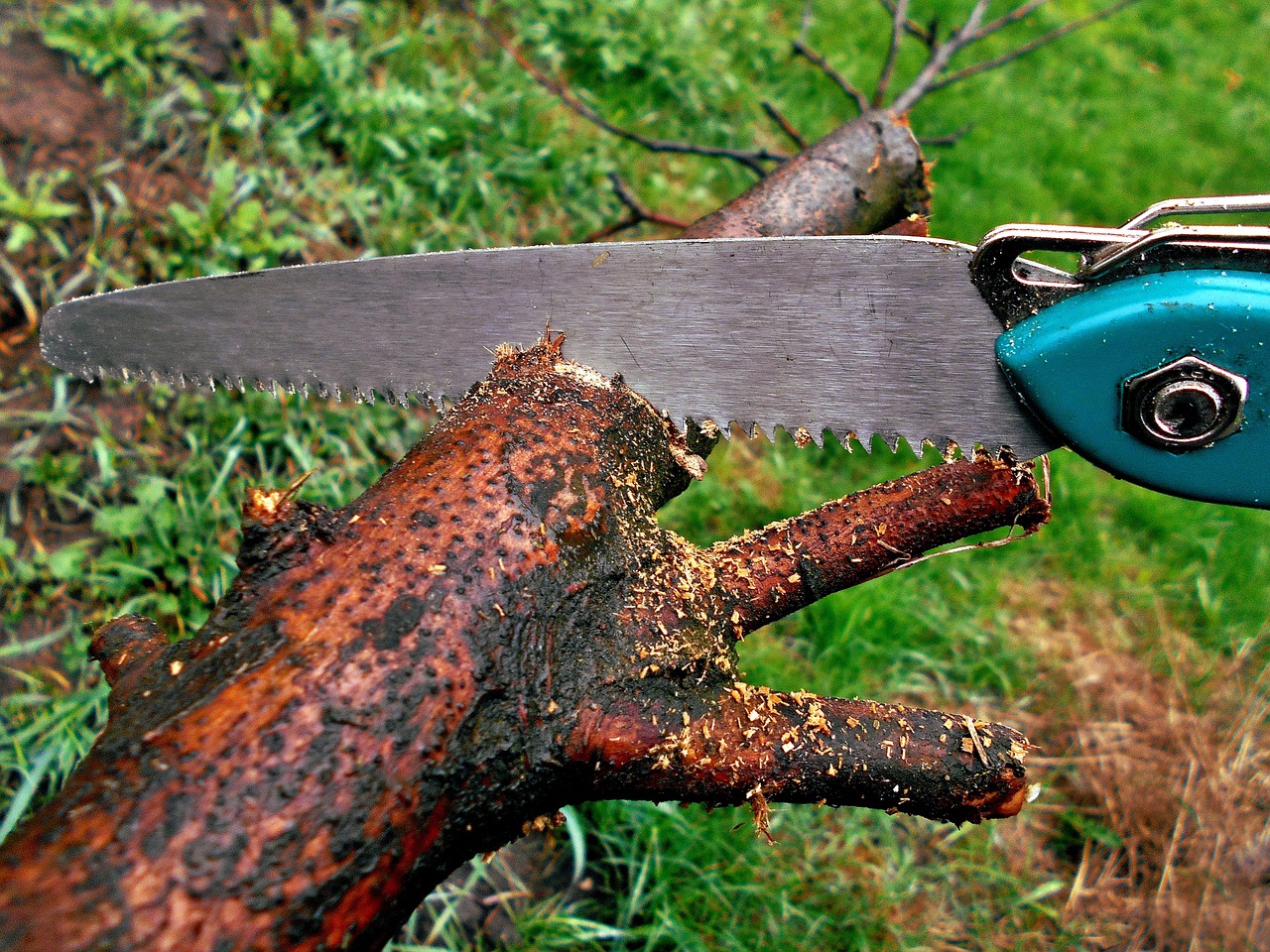Summer pruning helps maintain cooler outdoor spaces by reducing plant size and improving airflow. This practice encourages healthy growth and enhances the overall aesthetics of gardens, while also minimizing heat retention from dense foliage.
As summer arrives, many gardeners look for ways to keep their outdoor spaces comfortable. One effective method is summer pruning. This horticultural technique not only promotes plant health but also contributes to a cooler environment. By selectively removing certain branches and leaves, gardeners can ensure that their gardens remain inviting during the warmer months.

Summer pruning differs from traditional pruning, which typically occurs in late winter or early spring. The main goal of summer pruning is to control the size and shape of plants while encouraging new growth. This is particularly important for plants that may become too dense, leading to increased heat retention and a decrease in air circulation.
The Benefits of Summer Pruning
Summer pruning offers several advantages for both plants and gardeners. Understanding these benefits can help you make informed decisions about your gardening practices. Here are some key benefits:
- Improves Airflow: By thinning out dense foliage, summer pruning allows for better air circulation. This can help reduce humidity levels around plants, making them less susceptible to diseases.
- Encourages New Growth: Pruning stimulates the growth of new shoots and leaves. This helps rejuvenate plants and enhances their overall appearance.
- Controls Size and Shape: This technique is useful for maintaining the desired size and shape of shrubs and trees, preventing them from overpowering other plants in the garden.
- Enhances Sunlight Exposure: Removing excess foliage allows more sunlight to reach lower leaves and surrounding plants. This can improve photosynthesis and overall plant health.
In addition to these benefits, summer pruning can create a more aesthetically pleasing landscape. By managing the growth of plants, you can design a garden that is visually appealing and functional.

When to Prune
The timing of summer pruning is crucial for achieving the best results. Generally, it is recommended to prune during mid-summer when plants are actively growing. This timing allows you to assess the plant’s health and determine which branches need to be removed.
However, the specific timing may vary depending on the type of plant you are working with. Some plants may respond better to pruning at different times. For example, certain flowering shrubs should be pruned immediately after they bloom to avoid cutting off next year’s flowers. On the other hand, trees can often be pruned later in the summer.
| Plant Type | Best Time to Prune | Notes |
|---|---|---|
| Flowering Shrubs | Immediately after blooming | Avoid cutting buds for next year’s flowers. |
| Deciduous Trees | Late summer | Focus on removing dead or diseased branches. |
| Perennials | Mid-summer | Prune spent flowers to encourage new blooms. |
It is important to monitor weather conditions as well when deciding on the right time to prune. Pruning during a dry spell can help reduce stress on plants and minimize the risk of disease. Conversely, avoid pruning during extreme heat or drought conditions, as this can weaken plants further.

Tools Needed for Summer Pruning
Having the right tools is essential for effective summer pruning. Here are some basic tools that every gardener should consider having on hand:
- Pruning Shears: Ideal for cutting small branches and stems.
- Loppers: Useful for reaching higher branches and cutting thicker stems.
- Saw: A small pruning saw can help with larger branches that need removal.
- Gloves: Protect your hands from thorns and sharp edges while working.
Using clean, sharp tools is vital to ensure clean cuts that promote healing in plants. Before starting, it is a good idea to disinfect your tools with rubbing alcohol or a bleach solution to prevent the spread of diseases between plants.
With the right techniques and tools, summer pruning can significantly enhance your outdoor spaces. Not only does it promote healthier plants, but it also contributes to a cooler and more pleasant environment during the hot summer months.

Techniques for Effective Summer Pruning
To achieve the best results from summer pruning, it is essential to apply the right techniques. Each plant type may require a specific approach, but there are some general strategies that can be beneficial across various species. Understanding these techniques will help ensure that your pruning efforts contribute positively to plant health and aesthetics.
Thinning Cuts
One of the most effective techniques in summer pruning is making thinning cuts. This involves removing entire branches back to their point of origin rather than cutting them back partially. Thinning cuts promote better airflow and light penetration, which are crucial for reducing heat and humidity.
- Benefits of Thinning Cuts:
- Reduces overcrowding within the plant.
- Encourages healthier growth patterns.
- Minimizes the risk of disease by improving air circulation.
Heading Cuts
Another common technique is heading cuts, where the tips of branches are removed. This method encourages lateral growth, resulting in a bushier appearance. It is often used on shrubs and trees that need to be maintained at a certain height or width.
- When to Use Heading Cuts:
- For ornamental shrubs that need shaping.
- On fruit trees to promote a more compact form.
Understanding Plant Response to Pruning
Each plant species reacts differently to pruning. Knowing how different plants respond can help you make informed decisions about what to prune and when. Here are some common plant responses:
| Plant Type | Response to Pruning | Recommended Pruning Techniques |
|---|---|---|
| Trees | May produce new shoots from cut areas. | Thinning cuts for overall health; heading cuts for shape. |
| Shrubs | Encourages bushier growth and flowering. | Heading cuts for shaping; thinning for air circulation. |
| Perennials | Stimulates new blooms and foliage. | Deadheading spent flowers; cutting back for rejuvenation. |
A proper understanding of how plants respond to pruning will allow you to tailor your approach to each specific species. This attention to detail helps ensure that your garden thrives throughout the summer months.
Avoiding Common Pruning Mistakes
Even experienced gardeners can make mistakes when it comes to pruning. Being aware of common pitfalls can help you avoid damage to your plants. Here are some mistakes to watch out for:
- Pruning Too Late: Waiting until late summer or fall can shock the plant and inhibit growth. Aim for mid-summer when plants are actively growing.
- Over-Pruning: Removing too much foliage at once can stress the plant. Always follow the one-third rule: do not remove more than one-third of a plant’s foliage at a time.
- Poor Tool Maintenance: Using dull or dirty tools can cause ragged cuts and lead to disease. Regularly sharpen and clean your tools before use.
- Ignoring Plant Health: Pruning diseased or damaged plants without proper care can spread illness. Always assess the health of the plant before deciding to prune.
The Role of Timing in Summer Pruning
The timing of your summer pruning activities can greatly influence the success of your efforts. While mid-summer is generally the best time for most plants, some species have specific needs that should be considered. Here are some guidelines for timing:
- Early Summer: Ideal for flowering shrubs that bloom on old wood. Prune immediately after flowering for optimal results.
- Mid-Summer: Best for many trees and perennials, as they can handle pruning stress during this active growth phase.
- Late Summer: Avoid heavy pruning as plants begin to prepare for dormancy. Focus on light maintenance and removing any dead or diseased branches.
By aligning your pruning schedule with the natural growth patterns of your plants, you can enhance their resilience and beauty throughout the summer season.
Sustainability Considerations in Summer Pruning
Sustainability is becoming increasingly important in gardening practices. Summer pruning can contribute to a more eco-friendly approach by promoting healthy plant growth and reducing waste. Here are some sustainable practices to consider:
- Composting Pruned Materials: Instead of discarding pruned branches and leaves, consider composting them. This reduces waste and enriches your garden soil.
- Choosing Native Plants: Native plants typically require less maintenance and are better adapted to local climates, making them ideal candidates for summer pruning.
- Avoiding Chemical Treatments: Focus on organic methods for pest control and disease prevention instead of relying on chemical treatments that may harm beneficial insects.
Embracing sustainable gardening practices not only benefits your plants but also contributes positively to the environment, creating a cooler outdoor space for everyone to enjoy.
Understanding Different Plant Types for Pruning
Different plants have unique growth habits and requirements. Understanding these differences is essential for effective summer pruning. By tailoring your approach to each plant type, you can maximize the benefits of pruning while ensuring that your garden flourishes. Here are some common plant types and their specific pruning needs:
Deciduous Trees
Deciduous trees, which shed their leaves each fall, often benefit from summer pruning to maintain their shape and prevent overcrowding. Here are some key considerations:
- Best Time to Prune: Late spring to mid-summer when the tree is actively growing.
- Focus Areas: Remove dead or diseased branches, and thin out crowded areas to improve airflow.
Flowering Shrubs
Flowering shrubs can vary greatly in their pruning needs based on their blooming cycles. Understanding whether a shrub blooms on old or new wood is crucial for timing your cuts.
- Old Wood Bloomers: These shrubs should be pruned immediately after flowering to avoid cutting off next year’s blooms. Examples include lilacs and azaleas.
- New Wood Bloomers: These shrubs can be pruned in late winter or early spring and may also benefit from light summer pruning. Examples include butterfly bush and some varieties of hydrangea.
Perennials
Perennials are often pruned during the growing season to encourage new blooms and prevent overcrowding. Here are some tips for perennial pruning:
- Deadheading: Regularly remove spent flowers to encourage further blooming.
- Cutting Back: After flowering, cut back foliage to promote new growth and rejuvenate the plant for the next season.
The Impact of Summer Pruning on Your Garden Ecosystem
Summer pruning not only benefits individual plants but also impacts the broader garden ecosystem. A well-maintained garden fosters a healthy environment for beneficial insects, birds, and other wildlife. Here are some ways summer pruning influences your garden ecosystem:
- Attracting Pollinators: By maintaining flowering plants through summer pruning, you create a more inviting habitat for bees, butterflies, and other pollinators.
- Disease Prevention: Improved air circulation reduces humidity around plants, limiting the spread of fungal diseases and pests.
- Creating Habitats: Pruned plants can provide shelter for birds and beneficial insects, enhancing biodiversity in your garden.
Pruning Techniques for Specific Goals
Your summer pruning efforts can be directed toward achieving specific goals in your garden. Whether you want to enhance aesthetics, increase fruit production, or manage plant health, different techniques can be applied. Here are some targeted approaches:
Enhancing Aesthetic Appeal
If your goal is to create a visually appealing landscape, consider the following techniques:
- Shaping: Use heading cuts to shape shrubs and trees. Maintain a uniform height and width to create a polished look.
- Layering: Prune lower branches to expose the trunk of ornamental trees, creating a layered look that draws the eye upward.
Increasing Fruit Production
<pFor fruit-bearing trees and shrubs, summer pruning can significantly impact yield:
- Thinning Out: Remove excess branches to allow sunlight to penetrate the canopy. This enhances fruit set and ripening.
- Encouraging Airflow: Thinning cuts improve air circulation around fruit clusters, reducing the risk of rot and disease.
Maintaining Plant Health
To promote overall plant health, consider these techniques:
- Removing Dead or Diseased Branches: Regularly inspect plants for signs of disease or damage, and promptly remove affected areas.
- Avoiding Stress: Limit pruning during periods of heat stress or drought to prevent further strain on plants.
Safety Precautions When Pruning
While summer pruning can be enjoyable and rewarding, it is important to prioritize safety throughout the process. Here are some safety precautions to keep in mind:
- Wear Protective Gear: Always wear gloves and safety glasses to protect your hands and eyes from debris.
- Ladder Safety: If using a ladder to reach high branches, ensure it is stable and positioned on level ground. Never overreach while on a ladder.
- Use Proper Techniques: Avoid cutting near power lines or in adverse weather conditions. Take your time to ensure clean, safe cuts.
By following these safety guidelines, you can enjoy a productive and safe summer pruning experience while enhancing your outdoor spaces.
Advanced Techniques for Summer Pruning
As you gain confidence in summer pruning, you may want to explore advanced techniques that can further enhance the health and appearance of your garden. These methods require a bit more knowledge but can yield impressive results.
Crown Reduction
Crown reduction is a technique aimed at reducing the overall height of a tree while maintaining its natural shape. This method is particularly beneficial for large trees that may be encroaching on structures or power lines.
- How to Perform Crown Reduction:
- Identify the leader branches that contribute to the height of the tree.
- Make cuts just above a lateral branch that is at least one-third the diameter of the cut branch.
- Avoid removing more than one-quarter of the tree’s canopy in a single season.
Espalier Pruning
Espalier pruning is a decorative technique that involves training plants, usually fruit trees, to grow flat against a wall or trellis. This method not only saves space but also allows for easier access to fruit. It requires careful planning and regular maintenance.
- Steps for Espalier Pruning:
- Choose a suitable variety that can tolerate this method.
- Install a trellis or wire structure against a wall.
- Regularly prune lateral branches to keep the plant flat and encourage growth in desired directions.
Seasonal Maintenance and Follow-Up
After summer pruning, it is important to provide ongoing care for your plants to ensure they thrive. Regular monitoring and maintenance will help reinforce the benefits achieved through pruning.
- Watering: Ensure that pruned plants receive adequate moisture, especially during dry spells. Newly exposed areas may require extra attention.
- Nourishment: Consider applying organic fertilizers to support new growth and rejuvenation following pruning.
- Monitoring for Pests: Keep an eye out for any signs of pest infestations or diseases that may arise after pruning. Early detection is key to effective management.
The Environmental Impact of Summer Pruning
Summer pruning plays a significant role in promoting a sustainable garden ecosystem. By enhancing plant health and reducing the need for chemical interventions, you contribute positively to the environment. Here are some environmental benefits associated with summer pruning:
- Carbon Sequestration: Healthy trees and plants absorb carbon dioxide, helping mitigate climate change. Pruning helps maintain their vitality.
- Biodiversity Support: A well-pruned garden can attract a diverse array of wildlife, including birds and beneficial insects, enhancing ecosystem stability.
- Soil Health Improvement: Composting pruned materials enriches soil quality, promoting healthier plant growth and reducing erosion.
Final Thoughts
Summer pruning offers numerous benefits for maintaining cooler outdoor spaces while promoting healthy plant growth. By understanding various techniques, plant responses, and best practices, gardeners can create aesthetically pleasing and environmentally friendly gardens. The right approach to summer pruning can significantly enhance both the beauty and functionality of your outdoor areas.
Remember that each plant type has unique needs, and tailoring your pruning strategy accordingly will yield the best results. Embrace sustainable practices by composting pruned material and avoiding harmful chemicals. As you refine your skills in summer pruning, you will not only enjoy a more manageable garden but also contribute positively to your local ecosystem.
Ultimately, summer pruning is not just about maintaining plants; it is about fostering a thriving outdoor space that provides comfort and enjoyment. With careful planning and execution, you can transform your garden into a cooler sanctuary that thrives throughout the summer months and beyond.
